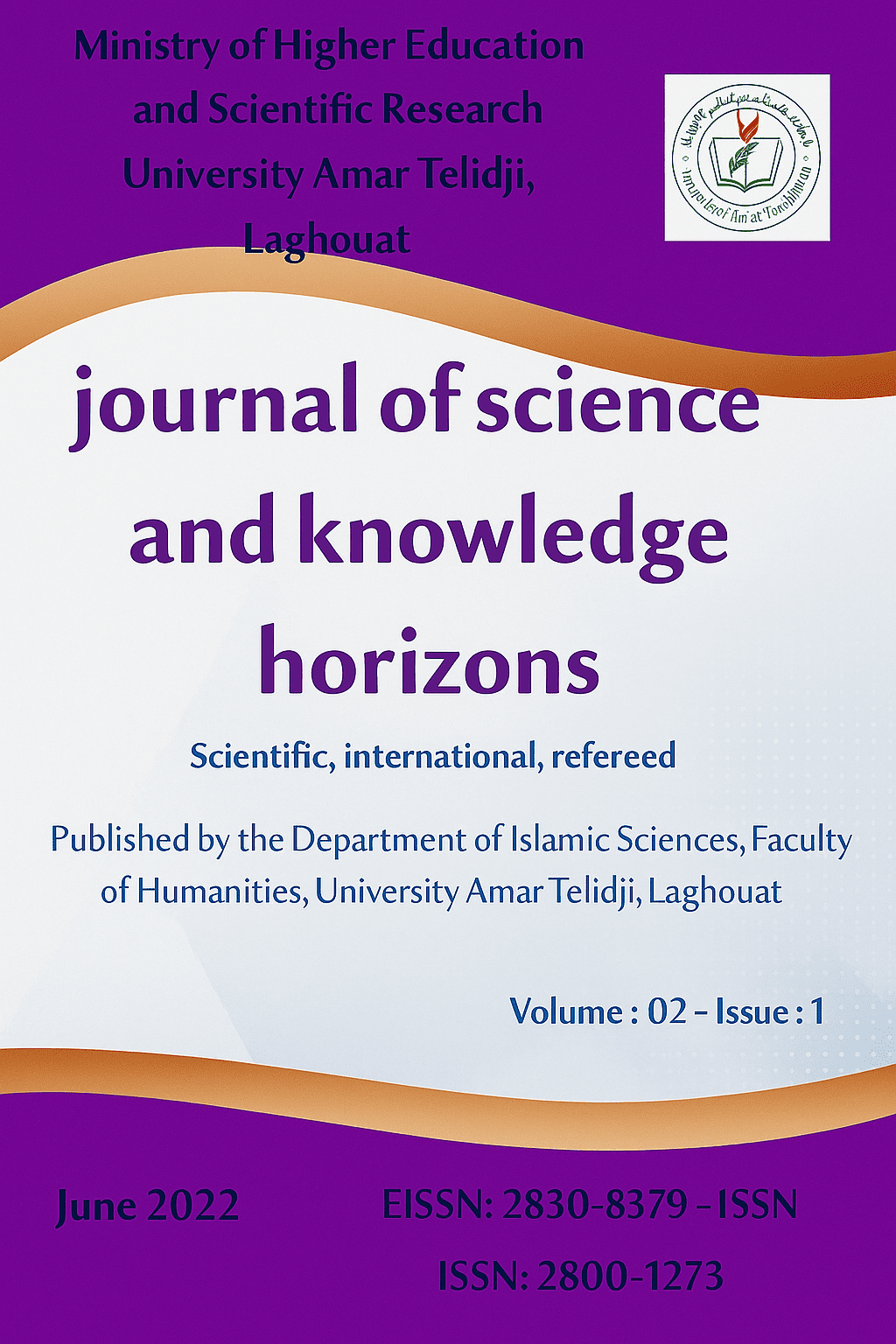Abandoned words in Arabic dictionaries
Abstract
Contrairement à d'autres langues qui meurent après un certain temps, l'arabe a conservé ses caractéristiques et ses avantages depuis l'ère préislamique jusqu'à aujourd'hui. L'arabe a fait l'objet d'un grand soin de la part des linguistes, car ils ont essayé de le garder intact afin de ne pas gâcher le Coran par sa corruption. Par conséquent, de nombreux mots sont restés en usage, et certains d'entre eux sont restés dans les livres, mais ils ne sont pas utilisés dans la vie quotidienne. Le lexicographe essaie de décrire la langue vivante utilisée parmi les membres de la société, et il lui est difficile de choisir des mots et d'en mettre d'autres, étant donné que l'arabe est ancien et moderne : Le mémoire tente d'enquêter sur les raisons de cet abandon des mots et de les étudier aux niveaux linguistiques, social et lexical. La question suivante est peut-être la plus importante que l'on puisse se poser dans ce problème : quels sont les facteurs qui provoquent l'abandon des mots ? Le lexicographe doit-il enregistrer les mots abandonnés ?
Downloads
References
Ibn al-Jawzi, Jamal al-Din Abu al-Faraj (1422). Zad Al-Masir in the science of interpretation, investigation of Al-Mahdi, Abdul-Razzaq, Beirut: Dar Al-Kitab Al-Arabi.
Ibn al-Jawzi, Jamal al-Din Abu al-Faraj (2006). Correction of the Tongue, 2nd edition, edited by Matar, Abdul Aziz, (D.M): Dar Al-Maarif.
Ibn al-Sakit, Abu Yusuf Yaqoub (2002). Reform of Logic, a terrifying investigation, Muhammad (D.M): Arab Heritage Revival House.
Ibn Fares, Ahmed (1979). Lexicon of Language Measurements, investigation by Haroun, Abd al-Salam Muhammad, (D.M): Dar al-Fikr.
Ibn Fares, Ahmed (1997). Al-Sahibi in the jurisprudence of the Arabic language and its issues and the Sunnah of the Arabs in their speech, (Dr. M): Muhammad Ali Baydoun.
Ibn Qutayba, Abu Muhammad Abdullah (Dr. T). Literature of the Book, investigated by Al-Dali, Muhammad (D.M): Al-Resala Foundation.
Al-Azhari, Muhammad bin Ahmed (2001). Refining the Language, a terrifying investigation, Muhammad Awad, Beirut: Arab Heritage Revival House.
Al-Anbari, Muhammad bin Al-Qasim (1992). Al-Zaher in the meanings of people's words, investigated by the guarantor, Hatem Salih, Beirut: Al-Risala Foundation.
Anis, Ibrahim (1984). Semantics, 5th Edition, (D.M): Anglo Egyptian Bookshop.
Bay, Mario (1998). Foundations of Linguistics, translated by Omar, Ahmed Mukhtar, 8th edition, (D.M): The World of Books.
Al-Batliosi, Abu Muhammad Abdullah (1996). Briefness in explaining the literature of the book, investigated by Al-Sakka, Mustafa and Abdel-Hamid, Hamed, Cairo: The Egyptian Book House Press, Cairo.
El Gohary, Abu Nasr Ismail (1987). Al-Sahah is the crown of language and the authenticity of Arabic, investigated by Attar, Ahmed Abdel-Ghafour, Beirut: Dar Al-Ilm for Millions.
Hegazy, Ahmed Aref (D.T). Semantic change. Retrieved from the following link: https://bit.ly/3cqaimP.
Hamza, Hassan (2010). Linguistic levels in contemporary Arabic. Retrieved from the following link: https://bit.ly/3dWiEnM.
Al-Hamwi, Shihab El-Din (1995). Lexicon of the Countries of the World, 2nd edition, Beirut: Dar Sader.
Reda, Ahmed (1960). Lexicon of Matn Al-Lugha, Volume 5, Beirut: Dar Al-Hayat Library.
Narrator, Salah (1990). Arabic lexicographical schools, their origins, development, and curricula, Cairo: House of Arab Culture.
Al-Zamakhshari, Mahmoud bin Amr (1998). The Basis of Rhetoric, Achieving the Eyes of Blacks, Muhammad Basil, Beirut - Lebanon: Dar Al-Kutub Al-Alami.
Sarhan, Yasser Abdullah (2005). The phenomenon of verbal abandonment in Arabic, Journal of Linguistic Studies, Vol. 8, No. 44, pp. 62-101.
Al-Suyuti, Jalal Al-Din (1998). Al-Mizhar in Language Sciences and its Types, investigated by Ali Mansour, Beirut: Dar Al-Kutub Al-Alami.
Al-Sabouni, Muhammad Diaa al-Din (1413 AH). Conclusion in rhetoric and performances, 3rd Edition, Makkah Al-Mukarramah: The Muslim World League.
Al-Saedi, Abdul-Razzaq Farraj (1418 AH). The death of profanity in Arabic, (D.M): The Islamic University of Medina.
Al-Obaidan, Musa bin Mustafa (2004). Death in Language, Arab Heritage, No. 95, pp. 11-32.
Omar, Ahmed Mukhtar (2008). Dictionary of Contemporary Arabic Language, (D.M): The World of Books.
Al-Farahidi, Al-Khalil Bin Ahmed (Dr. T). The Book of Al-Ain, investigated by Al-Makhzoumi, Mahdi and Al-Samarrai, Ibrahim, (D.M): Dar and Al-Hilal Library.
Al-Fayoumi, Ahmed bin Muhammad (D.T). The illuminating lamp in Gharib al-Sharh al-Kabir, Beirut: The Scientific Library.
The Arabic Language Academy (2004). Al-Mu'jam Al-Waseet, 4th Edition, (D.M): Al-Sharq International Library.
Al-Maghribi, Abdul Qadir bin Mustafa (1908). The Book of Derivation and Arabization, Egypt: Al-Hilal Press, Faggala.
Bureau des etudes et recherches (2004). Dictionnaire generale, linguistic technique and scientific, Beyrouth-Liban: Dar al-kotob al-ilmiyah.
De Saussure, Ferdinand (2005). Cours de linguistique générale, Genèvre: Arbre d'or

This work is licensed under a Creative Commons Attribution-NonCommercial 4.0 International License.






